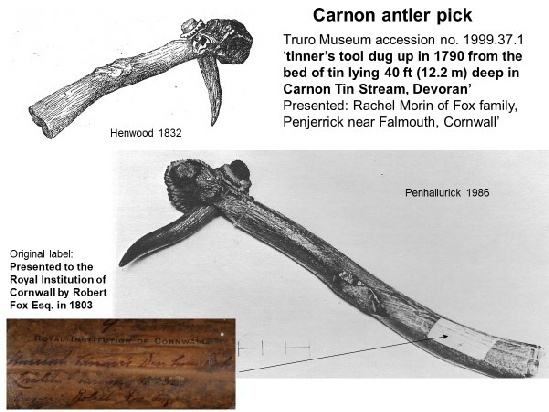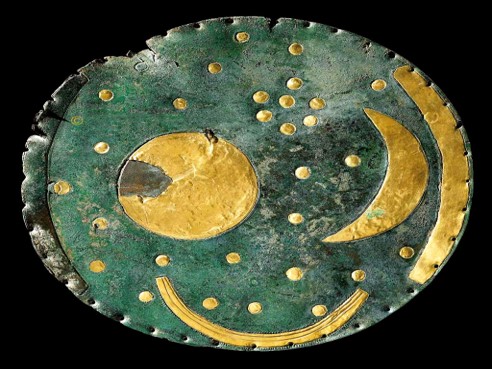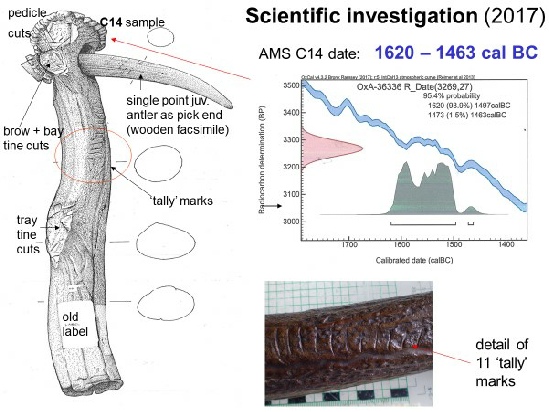



![]()
![]()

New evidence for Bronze Age tin mining in Cornwall –
the dating of the Carnon Valley antler pick in
Truro Museum
the dating of the Carnon Valley antler pick in
Truro Museum
Towards the end of 2017, important new evidence emerged concerning the origins
of tin in Britain, following the dating of an artefact within the collections of the Royal
Institution of Cornwall in Truro.
In 1790, when alluvial tin miners were working the tin ground (alluvial tin deposits)
near Devoran Bridge, Truro at a depth of 12.2m beneath the bed of the Carnon River
Valley, they discovered an antler pick and other artefacts, and also skeleton(s)
associated with prehistoric metalwork.
Simon Timberlake raised funds and permission to sample this museum object in 2016,
and the drilling of the sample was carried out within the AMS dating laboratory in
Oxford
The Early Bronze Age (c.16th century BC) date for this mining tool is important
as it is the first evidence for the extraction of tin (and/or alluvial gold) in the British
Isles.
The date matches that of the smelted tin metal found beneath the Caerloggas I
barrow (Cornwall), and also the postulated date of the Nebra Sky Disc from Germany;
the gold (and possibly also the tin) of which it is suggested can be provenanced to
the Carnon Valley (Borg 2017).
Examination of the antler pick has revealed the presence of “tally marks” cut into its
side, perhaps a means of recording the efforts of the prehistoric miners?
of tin in Britain, following the dating of an artefact within the collections of the Royal
Institution of Cornwall in Truro.
In 1790, when alluvial tin miners were working the tin ground (alluvial tin deposits)
near Devoran Bridge, Truro at a depth of 12.2m beneath the bed of the Carnon River
Valley, they discovered an antler pick and other artefacts, and also skeleton(s)
associated with prehistoric metalwork.
Simon Timberlake raised funds and permission to sample this museum object in 2016,
and the drilling of the sample was carried out within the AMS dating laboratory in
Oxford
The Early Bronze Age (c.16th century BC) date for this mining tool is important
as it is the first evidence for the extraction of tin (and/or alluvial gold) in the British
Isles.
The date matches that of the smelted tin metal found beneath the Caerloggas I
barrow (Cornwall), and also the postulated date of the Nebra Sky Disc from Germany;
the gold (and possibly also the tin) of which it is suggested can be provenanced to
the Carnon Valley (Borg 2017).
Examination of the antler pick has revealed the presence of “tally marks” cut into its
side, perhaps a means of recording the efforts of the prehistoric miners?

19th Century alluvial tin mining in the Carnon Valley (Penhallurick, 1986)
Carnon antler history and labels (S. Timberlake)
Carnon antler pick drawing and C14 date (S. Timberlake and B. Craddock)
The Nebra sky disc
This website was made possible by a grant from the Cambrian Archaeology Association
